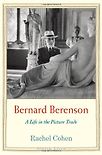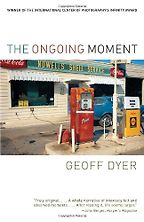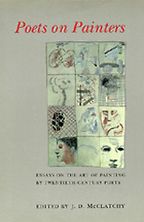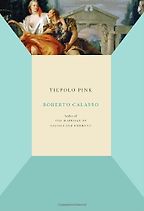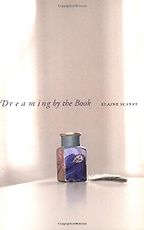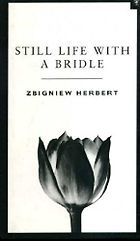What role does writing about art play, in an age when it’s relatively easy to see an image directly – whether it’s via the Internet or going to a museum?
In every era there are different varieties of visual experience and it may help to have an interpretation. Even if you think it’s all so direct now — you don’t really need much language because you can have a 24-hour stream of images — people actually spend very little time with each image that they encounter. At a museum, you see people going quickly through and just glancing here and there. I think there’s a kind of assumption about an image that it’s readable all at once, that as soon as you’ve seen it, you’ve seen it. In fact, what there is to see in most images changes a lot over time – whether they’re photographs online or paintings in a museum. Writers really can help, even, sometimes, just by describing what’s in a picture. It’s perfectly fine to reproduce the picture and describe it immediately next to it, because even with the image right there, the reader is not necessarily taking in very much. In short, part of the purpose of writing about visual experience is to slow the reader down and give them the chance to look more carefully.
Let’s talk about the books you’ve chosen, starting with Geoff Dyer’s book about photography, The Ongoing Moment.
Yes, Geoff Dyer is a devotee of John Berger, who is another person who I could definitely have included. I chose mostly to bring together books that I’m currently engaged with, in trying to write about visual experience myself for the notebook I keep online. One of the things that’s really striking about Geoff’s book — and all of these books — is that “ways of seeing,” in Berger’s phrase, are so idiosyncratic. Different individuals see so particularly and part of the joy of reading a book like this is getting to encounter his way of seeing. He sees things in these photographs that I would never have noticed, and his way of assembling them allows you to have a new vision of these images.
Part of what I love in the book is that it’s beautifully structured, it’s built around certain ideas or content that recurs through different photographs. So there’s a long loop on the hat, there’s another one on benches, there’s ones on bodies. As you read through them, you have this sense of the way photographers themselves feel images in their mind. They see an earlier photographer’s picture of a hat, and then that becomes part of their own understanding, so that when they photograph hats they’re always alluding to the earlier images. This is maybe a property peculiar to photography — the incredible liquidity with which this referentiality happens — and Geoff, who also loves jazz, has a very fine eye and ear for this kind of cross-referencing that the artists themselves are doing. I think that really helps you to see photography in a different way and to experience these pictures as the photographers experienced them. You feel as if you’re entering into the way that photographers themselves are working and thinking.
Is it Geoff’s interpretation of the way they’re working and thinking or are the photographers consciously thinking that way?
You can’t know that. But the images are very striking in their resemblances, you feel their connectedness. It doesn’t have to be a conscious reference, or an acknowledged one, in order for it to be valuable for a viewer. That’s a thing about visual work in general, that’s like writing. In writing, you’re always learning from other writers, you’re always redoing things that other writers have done. So are painters and photographers. Even if it’s far back in the mind of the practitioner, it can still be very interesting for a viewer to see. We assume in painting that painters are conscious of the whole history of art and that they will have seen many of the great works of art and will have thought about them. The same is true in photography. I know that photographers are avid consumers of photographs, but I just hadn’t thought about it in quite the way that Geoff does.
So would you say that he is writing about photography in a very unusual way?
Yes, it’s a very brilliant and unusual way of entering this material. People tend to isolate photographers and write monographs about one at a time. If they’re writing about groups of photographers, they tend to write about them like a group that all existed together at the same chronological moment, and not to trace these kinds of lineages that descend over time and loop around.
I have a soft spot for Geoff Dyer because when his first novel, The Colour of Memory, came out he used one of my brother’s paintings on the front cover. This is before he was famous, so now when I see how well he’s doing, I feel pleased.
He is doing really well. I think he has wonderful taste both in literature and in pictures, so that’s very nice, that he liked your brother’s work.
Your next choice is a collection of essays by famous poets, including Ted Hughes and W.B. Yeats, called Poets on Painters. Tell me a bit more what it’s about.
This is a wonderful anthology edited by J.D. McClatchy. It brings together roughly a century of Anglo-American poets writing about painting. It starts with Yeats and goes all the way up through Richard Howard and John Ashbery. It has a very quirky sensibility. McClatchy says that he wanted to bring together an Anglo-American tradition of poets writing about painting. It’s sort of hard to say what the tradition might be, and he lets the different pieces speak for themselves. He says they all have an interest in style and that’s definitely true. You can really feel the individual voices of the poets in the things they’ve chosen to talk about and in the way they’ve chosen to talk about them.
“What there is to see in most images changes a lot over time”
I love the book for its surprises, it’s like a little treasure chest. Every time I go back to it, I find some essay that I didn’t pay attention to before that’s somehow revelatory, or just gets my interest going, my attention sharply drawn in one direction or another. This is actually a book that a student of mine gave me, a lovely writer calling Corinne Manning and that’s also nice. I teach writing about the arts, but this wasn’t a book I knew, until this student gave it to me. One of my favourite pieces in it is a piece by Frank O’Hara about Jackson Pollock. That’s an essay I’ve quoted in my own work and returned to repeatedly. It really manages — through both its poet’s sensibility and the proximity of O’Hara to Pollock, he really knew Pollock, and really understood what Pollock’s project was — to bring out a lot of the different dimensions in Pollock’s work that are somewhat subsumed in his current, gigantic status. It’s easy just to be told he’s great painter and not really think about what his project was. For its specificity I really appreciate that essay and many of the essays in that collection.
And the idea is that a poet has a different approach than an art historian?
Yes. That’s something I’m interested in. I recently wrote a book about Bernard Berenson who was an art connoisseur and art critic. Part of what was extraordinary about him was his way of seeing. Working on that project is what got me really interested in this topic and trying to think about what different people’s ways of seeing are. Berenson had, in some ways, a quite poetic way of seeing. He carried this incredible wealth of art historical knowledge with him, but that wasn’t always what he talked about when he was trying to bring a painting across to a reader. I think there’s a lot to be said for just careful looking and careful language in rendering visual experience.
Your next book is Still Life with a Bridle, the title of a 17th century Dutch painting, and indeed the book, by Zbigniew Herbert, is all about 17th century Dutch painters…
Zbigniew Herbert is a great Polish poet and essayist of the 20th century. I love a lot of his work, and this essay collection is an old favourite. It’s one I’ve read many times and taught many times. He has a few qualities that are unusual in trying to bring a reader into contact with visual material. He doesn’t often describe, in detail, the paintings, although sometimes he does. The pictures are not reproduced in the book, so you don’t see them. But he comes at it through a combination of a wonderful documentation of what material life was like in the 17th century — what people sat on, what they ate, what their rooms were like, what the goods were that were traded and valued — and a propensity to make a strange myth out of what’s known of the biographical details of the lives of the individual painters. So you feel as if you’ve been told fairy tales, at the same time that you feel immersed in the economic history of the moment. That combination is wonderfully evocative for what the paintings themselves are like, although he’s relying on you to carry some images that you may have seen yourself and bring those to bear on the inquiry.
I think it’s really a very unusual and beautiful book. When I’ve taught it to students they’ve been very excited about the way that you think you’re learning about one thing and gradually a picture is emerging in the back of your mind about something else. His control of the different levels of your engagement with the material is really amazing.
So what do you think he’s trying to do in the book?
I think he has a particular idea of what it is to be an artist, and he’s concerned not to separate the life of the artist from the life of the world. We shouldn’t think, well here’s this artist whose visual observations we have, and who was somehow separate from the world by virtue of his great talent — or even by virtue of the fact we still care about what he looked at. No, these people are immersed in their world, their observations are derived from the world around them. Herbert was in the Resistance in World War II and experienced the Communist overtaking of Poland. His life was completely shaped by large political forces, and he was very brave in his responses. I think he felt it was quite dangerous to let the idea of an artist stray from the world in which the artist lived. So he’s at pains not just to make us feel what that world was like, but to return the artist to his right relation with his times and with his life experience. Also, his experiences of Poland are always in the back of his mind, and you can read many of his parables about these artists as parables about his own times too.
Let’s go on to your next choice, about the Venetian Rococco painter, Giambattista Tiepolo. It’s called Tiepolo Pink and it’s by Roberto Calasso.
Roberto Calasso is one of the few writers working today where I just read everything he writes. If he writes something, I read it. I think he’s extraordinary.
He is an Italian and his books are translated into English, is that right?
Yes, I read them in English. I think they’re quite well translated. Calasso is somebody with a passion for large mythological structures, like the whole of Greek mythology, the whole of the Vedas. He’s enormously classically educated and has a wonderful book on Kafka also, that treats Kafka’s stories as a kind of inter-connected set of myths. So I was really curious to see what he would do with a painter. It didn’t seem obvious to me that he would be able to bring the same kind of structures to bear on the work of a painter, and I hadn’t paid much attention to Tiepolo until I read this book. But when I did read it I was astonished to see how much of Tiepolo I had missed and also to see how well Calasso’s particular way of approaching material worked with this painter. The book is a structured in a kind of musical scherzo structure — an A-B-A form — so there’s a middle section that’s got a different melody from the outer sections. That allows you to move from light to dark to light, which is a wonderful metaphor for Tiepolo’s work which is all about light. He looks at groups of pictures, and the way Tiepolo keeps using the same figures in the same kinds of poses and the same props as if he were portraying a kind of travelling company of players. That is really effective, it really allows you to see what Tiepolo was after. So it’s a case of where the particular way of seeing of the writer really is revelatory of what the painter is doing. I went to the Met not long ago to look at Tiepolo under the influence of Calasso and was kind of uplifted by how much better I felt I was seeing. That’s maybe the best measure of whether a book about visual experience is working, whether it returns you to the world with clearer eyes for the particular subject.
Yes, he’s not one of the most well-known of the Italian painters…
Right, you don’t necessarily think, “Oh that’s someone I really want to work on, he’s canonical.” You just think, “Oh right, 18th century, things are a little fluttery, it’s not the high moment of the Renaissance.” In a way, Calasso makes a case for Tiepolo as not the last of the Old Masters, but one of the first of the Moderns. That also is interesting and helps bring him into focus.
Your last choice is a little bit different from the other books you selected. Tell me about Dreaming by the Book, by Elaine Scarry.
This is a book I just read and was very struck by. I wanted to include it because it seemed like an interesting companion to the other books. Elaine Scarry is not writing about painting or photography, she’s writing about novels or poetry in which there is a strong visual experience for the reader. When you’re reading Homer or Wordsworth or Thomas Hardy you have a sharp visual image in your mind. She’s writing, in a way very technically, about what techniques she thinks writers are using to have this evocative effect. She begins with an interesting paradox. If you’re told, “Imagine the face of a friend,” it’s very hard to call up an image. Your mind doesn’t really do that very readily. But if you’re reading a description of someone’s face, you can get it in your mind quite clearly. The question is, what’s happening in the visual imagination that allows for that ease, that facility of calling up images? She thinks that it actually helps to be instructed, that if you’re told how to look, then your mind enters into a different space and you can call up these images. So she’s looking at the kinds of instruction the great writers use.
“The best measure of whether a book about visual experience is working is whether it returns you to the world with clearer eyes.”
I think she’s quite right, about these kinds of techniques: for example, the way that butterflies and birds and other things allow you to imagine flight or movement through the air. So I was very interested in that. For me, it was also useful because when you’re writing about a painting or photograph there’s always a question, are you trying to get the reader to see the thing? Or are you doing something different? I think both things are valuable. For a writer who is interested in evoking visual material, this is a wonderful book to look at, because it’s so technically clear.
I always read Amazon.com reader reviews because it gives me a good sense of what a range of people think about a book. One such reviewer said about this book, “This book has changed how I read books. Her revelations about technique cannot be undone once learned.” It’s a pretty important book, then?
Yes, it does seem to me it’s very persuasive and unusual. It’s not like anything I’ve ever read before. As a writer, I sometimes did have the feeling that I imagine a dancer might have reading an anatomy book, that you don’t necessarily want the bones laid bare in that way, to know what’s happening in this thing you’re using in this interpretive way. But, at the same time, I thought it was essential reading for someone trying to understand how writers create visual experience.
Yes and that’s useful for all writers — in the end we all want to create vivid images in readers’ minds…
That’s right, and that’s also why it’s interesting to read books about visual work, even if that’s not your main interest, or even if you think “Well I don’t write about photographs or paintings.” It’s a very concentrated study of how you move around in the world with your eyes, which is surely what a lot of writers are trying to do. It sharpens and it sensitizes things. Going back to your first observation, we live in an ever more visual culture, we see so many more images every minute then people did 20 or 50 years ago. Somehow, interpretation of visual experience has become one of the primary jobs of the writer. Maybe it has always been, but it certainly is now.
Five Books aims to keep its book recommendations and interviews up to date. If you are the interviewee and would like to update your choice of books (or even just what you say about them) please email us at [email protected]
Five Books interviews are expensive to produce. If you've enjoyed this interview, please support us by donating a small amount.

